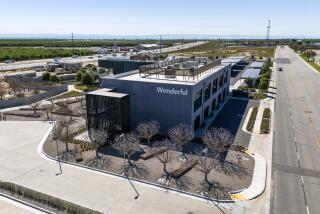452 children died on the job in the U.S. from 2003 to 2016
- Share via
Child labor exists in the United States in the 21st century. It’s legal and widespread, and it’s also, in some cases, dangerous.
Children were killed on the job in construction, retail, transportation and even manufacturing and logging. But most of them, 52%, died working in agriculture.
A 12-year-old was cleaning drainage systems in Tennessee in March when an ATV flipped onto him. He died from his injuries. A 14-year-old boy was trapped in eight feet of feed in a silo while working with his father on a Wisconsin dairy farm in June — they both died. A 14-year-old was crushed to death by a New Holland LS170 Skid Loader while attempting to move bales of hay on a dairy farm in upstate New York in 2014. A 16-year-old construction worker in Missouri was struck and killed by a swinging crane that same year.
A total of 452 children died as a result of workplace injuries from 2003 to 2016, according to the Government Accountability Office. Seventy-three of those who died were age 12 or younger.
Children working in agriculture are killed at a far higher rate than their peers in other industries. Farm workers make up less than a fifth of America’s child workforce — perhaps much less — yet they suffered more deaths in 2003 to 2016 than all other child workers combined.
Young workers made up a small fraction of all those injured on the job. The government doesn’t have a comprehensive measure of the child workforce, but it tracks deaths carefully.
We can piece together a picture of the nation’s entire child workforce from several sources.
Labor Department figures show the number of children working in the United States hit a post-recession high of 2.5 million in the summer of 2017, the most recent year for which numbers are available. We have the most data for children ages 15 to 17. They are covered by the Labor Department survey that provides data for statistics such as the unemployment rate.
The figures likely undercount child labor in agriculture, as it leaves out large populations of household workers and workers younger than 15. Most children injured on farms were younger, below age 14. Two out of three of those injured were hurt while working on their family farm.
Among workers ages 15 to 17, 52% of those employed in the summer of 2017 were female.
About 87% of child workers who died from 2003 to 2016, of all ages, were male.
The Centers for Disease Control and Prevention’s Child Agricultural Injury Survey separately found about 524,000 children worked on farms in 2014. The survey found about 375,000 “working household children” that same year. Two-thirds of them were 14 or younger, according to the GAO’s analysis.
The law includes protections for child laborers, although oversight varies. Specific states may be more strict. But for the first time since 2012, 2016 marked a rise in Labor Department investigations of child labor and in the number of violations. Most violations were found in leisure and hospitality, a large sector that includes restaurants, recreation and the performing arts.
The Labor Department allows children ages 16 and 17 to work, but it bars them from hazardous tasks such as mining coal, operating a lathe, roofing a house or handling radioactive materials.
Children ages 14 and 15 can work for limited hours in less dangerous jobs such as office work, food service and pumping gasoline.
Children ages 13 and younger are allowed in just a handful of exempt, regulated professions. Most notably, they can babysit, deliver newspapers and act in plays or movies.
But there are few restrictions to working on a family farm. According to the Occupational Safety and Health Administration, “youths of any age may work at any time in any job on a farm owned or operated by their parents.” Keep this exemption in mind when reading the standards that follow.
Children younger than 14 need a parent’s permission to work on a farm. They can’t work during school hours. Children younger than 12 can work only on farms so small that they’re not required to pay the minimum wage.
Farm workers ages 15 and younger can’t operate a combine harvester or most larger tractors, use dynamite or other explosives, or perform other hazardous tasks. There are exceptions for children who have been trained on certain tasks and machinery in a program such as 4-H.
In 2012, the Obama administration backed off an attempt to protect children in more hazardous farm occupations. Critics claimed it ignored the realities of rural life and would prevent children from doing their chores. It exempted work on the child’s family farm.
Most deaths that occurred during the five most recent years for which we have data involved motor vehicles. (The same was true of workers of all ages).
According to the National Children’s Center for Rural and Agricultural Health and Safety, the death rate among child workers between the ages of 15 and 17 has stayed steady or risen on farms even as it has declined in other occupations.
The center’s director, Barbara Lee, has long fought for farm safety, especially for the youngest workers.
“The news reports of these deaths and traumatic injuries cross my desk every day,” Lee said. “They are not ‘accidents’ because that word implies they are out of our control.”
“The truth is,” she said “that each of these traumatic events is predictable and preventable. Adults bear responsibility for putting these kids at risk.”
Van Dam writes for the Washington Post.
More to Read
Inside the business of entertainment
The Wide Shot brings you news, analysis and insights on everything from streaming wars to production — and what it all means for the future.
You may occasionally receive promotional content from the Los Angeles Times.










